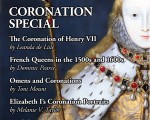
Here’s the August 2015 magazine with all our regular items and contributors plus lots of fascinating articles. This month we have a “Coronation Special” section with articles from a number of eminent historians….
[Read More...]
Here’s the August 2015 magazine with all our regular items and contributors plus lots of fascinating articles. This month we have a “Coronation Special” section with articles from a number of eminent historians….
[Read More...]
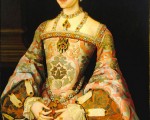
We tend to think of her as the woman who comes from nowhere, she’s not. In many ways she’s the most interesting, the most exciting, the best educated, and the cleverest of Henry’s wives. -David Starkey
Katherine Parr has been remembered through history as King Henry VIII’s sixth and final wife. The fortunate wife that survived. She has been labelled as merely Henry’s nurse, tending to the sickly king’s infirmities. Essentially, she is believed to be little more than Henry’s companion in his final years, with no great achievements of her own. She is often viewed as a wife of lesser importance, in contrast to the hugely popular Anne Boleyn whose legacy has been carried through centuries of intrigue and fame. This article intends to demystify the myths associated with Katherine Parr’s turbulent life, thus to reveal a more realistic view of a women who was well read, deeply religious and ultimately important during her time.
[Read More...]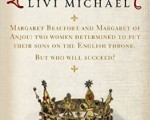
Author Livi Michael is one of our August speakers (yes, we’ve got 2!) and I just wanted to let you know that the second of her “Wars of the Roses” novels, Rebellion, is due out in the UK on 13th August as a paperback and kindle. It is also coming out on kindle on that date in the US.
[Read More...]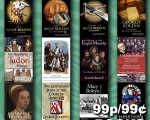
Following on from last week’s special on historical fiction books, MadeGlobal Publishing’s non-fiction history books are kindle countdown deals today and tomorrow (21 and 22 July) at 99c/99p each on Amazon.com and Amazon UK.
[Read More...]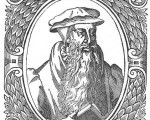
On 20th July 1554, John Knox, theologian and a leader of the Protestant Reformation in Scotland, published his pamphlet A Faithful Admonition to the Professors of God’s Truth in England.
[Read More...]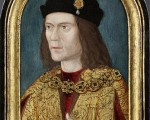
Test your knowledge on the offspring of the Plantagenet and Tudor monarchs with this fun quiz.
[Read More...]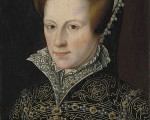
On 19th July 1553, thirteen days after the death of her half-brother Edward VI, Mary, eldest daughter of Henry VIII, was proclaimed queen in London in place of Queen Jane, who had been proclaimed queen on 10th July.
The Chronicle of the Grey Friars of London records:
[Read More...]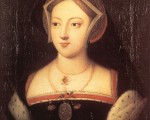
Today we have an article by Sarah Bryson, author of Mary Boleyn: In a Nutshell and a regular contributor to the Tudor Society.
Mary Boleyn is most certainly a woman of mystery. Her younger sister was Anne Boleyn, second wife of Henry VIII and Queen consort of England. Mary’s brother was a well-known member of Henry VIII’s court, who was evangelical in his religious beliefs and who, like his sister Anne, ended up on the scaffold. Mary’s father was also an important member of Henry VIII’s court. Thomas Boleyn was a talented man, who was fluent in French and who was sent on many missions as an ambassador for England. He was cunning and smart and used his skills and wits to provide a fantastic education for his children, as well as to further himself and his family at court. And yet when we look at Mary’s life compared to her famous siblings and father so little is known.
[Read More...]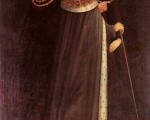
On this day in history, 18th July 1509, Edmund Dudley, administrator, President of the King’s Council in the reign of Henry VII and speaker of the House of Commons, was convicted of treason after being blamed for the oppression of Henry VII’s reign. He was charged with conspiring to “hold, guide and govern the King and his Council” and ordering his men to assemble in London during the final days of Henry VII’s life.
In the Third Report of the Deputy Keeper of the Public Records (1842), we have the record of “Trial and conviction of Edmund Dudley, Esq. – Constructive Treason – Commissioners of Oyer and Terminer, London, 18 July, 1509. 1 Hen. VIII”:
[Read More...]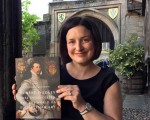
Here’s the transcript from our live-chat session with Elizabeth Goldring. Well done to Ceri for winning a copy of Elizabeth’s beautiful Robert Dudley book.
[Read More...]
El Monasterio de Nuestra Señora de la Asunción, now known simply as La Cartuja de Granada, is a Carthusian monastery in the city of Granada. The Carthusian Order once had twenty-four monasteries in Spain, but the majority were closed in 1836 and their lands confiscated and sold. Only four now remain inhabited today: Miraflores (Burgos), Montealegre (Barcelona), Aula Dei (Zaragoza) and Porta Coeli (Valencia).
[Read More...]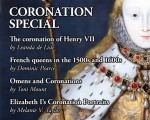
It’s not long until our brand-new August Tudor Life magazine will be available to members. This month we’re focusing on “Coronations” and there are many things that you wouldn’t believe unless you knew that they were true!
[Read More...]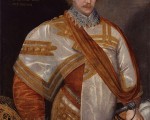
Today marks the anniversary of the death of Robert Sidney, 1st Earl of Leicester, poet and courtier, in 1626.
His notebook, which held a collection of poems and sonnets, and showed the revisions he made to them, was discovered in Warwick Castle’s library in the 1960s. It had a 19th century leather binding and researchers found that it had been acquired in 1848 after the library at Penshurst Place, Sidney’s home, had been broken up and sold. Although the poetry collection had been misattributed, scholar Peter Croft was able to identify Sidney’s handwriting and he went on to edit and publish Sidney’s poems with Oxford University Press. The British Library purchased the notebook at Sotheby’s in 1975 and it is now part of their collection, with reference Add. (Additional) MS 58435.
[Read More...]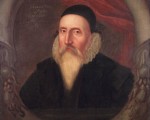
John Dee, astrologer, mathematician, alchemist, antiquary, spy, philosopher, geographer and adviser to Elizabeth I and various influential statesmen during her reign, was born in London on 13th July 1527.
[Read More...]
If you’ve watched my Claire Chats video on Tudor Indoor Games then you should find this quiz easy-peasy!
How much do you know about Medieval and Tudor card games, dice games, board games and indoor pursuits? Test your knowledge with this fun quiz.
[Read More...]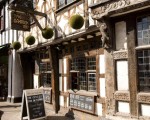
On this day in history, 11th July 1564, the plague hit Stratford-upon-Avon, birthplace of William Shakespeare, in Warwickshire, or rather the first death from the disease was recorded in the parish.
[Read More...]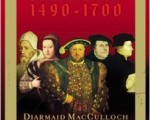
As requested by those who joined Gareth Russell’s live chat last month, here is a list of recommended reading on the Reformation.
[Read More...]
From the 9th to the 27th July 1575 Elizabeth I stayed at Kenilworth Castle in Warwickshire, home of her great friend Robert Dudley, Earl of Leicester. She had visited Kenilworth three times before but this was a special visit in that it lasted nineteen days and was the longest stay at a courtier’s house in any of her royal progresses.
We know a substantial amount about Elizabeth’s visit to Kenilworth because it was recorded in a letter by Robert Langham, a member of Dudley’s household, and in an account by poet and actor George Gascoigne, a man hired by Robert Dudley to provide entertainment during the royal visit.
[Read More...]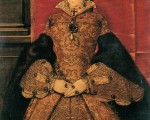
After declaring herself queen the previous day, in front of her household at Kenninghall, Mary Tudor, daughter of Henry VIII and half-sister of the late King Edward VI, wrote the following letter to the privy council:
“My lords, we greet you well and have received sure advertisement that our dearest brother the King and late sovereign lord is departed to God. Marry, which news, how they be woeful unto our hearts, He wholly knoweth to whose will and pleasure we must and do humbly submit us and our will.
[Read More...]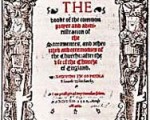
Thank you to Beth von Staats for joining us here on the Tudor Society today as part of her book tour for Thomas Cranmer: In a Nutshell. She is here to share an excellent article on Thomas Cranmer and the Book of Common Prayer – thanks Beth!
MadeGlobal Publishing is offering one copy of the paperback version of Thomas Cranmer: In a Nutshell as a prize for one lucky commenter. All you have to do to enter the giveaway is to comment below saying what you find so fascinating about Thomas Cranmer. You need to leave your comment by midnight (UK time) on Wednesday 15th July. The winner will be picked at random and contacted for his/her postal address. The giveaway is open internationally.
[Read More...]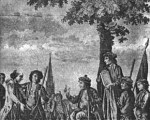
8th July 1549 was the beginning of Kett’s Rebellion. Robert Kett, a Norfolk farmer, agreed to lead a group of protesters who were angry with the enclosure of common land. The protesters marched on Norwich, and by the time they reached the city walls, it is said that they numbered around 16,000.
[Read More...]
In this month’s expert talk, Dr. Elizabeth Goldring from Warwick University talks about the art collection of Robert Dudley, Earl of Leicester.
[Read More...]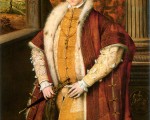
Between 8 and 9pm on 6th July 1553 King Edward VI lay dying at Greenwich Palace. He prayed:
“Lord God, deliver me out of this miserable and wretched life, and take me among thy chosen: howbeit not my will, but thy will be done. Lord I commit my spirit to thee. O Lord! Thou knowest how happy it were for me to be with thee: yet, for thy chosen’s sake, send me life and health, that I may truly serve thee. O my Lord God, bless thy people, and save thine inheritance! O Lord God save thy chosen people of England! O my Lord God. defend this realm from papistry, and maintain thy true religion; that I and my people may praise thy holy name, for thy Son Jesus Christ’s sake!”
[Read More...]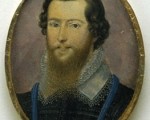
How much do you know about Tudor rebels and rebellions?
Test your knowledge and get those brain cells working with this fun quiz.
[Read More...]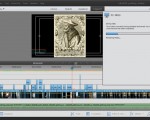
We’re just editing the amazing talk by Dr. Elizabeth Goldring from Warwick University all about the artwork collection of Robert Dudley.
[Read More...]